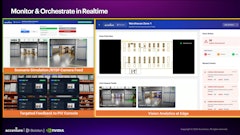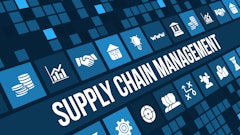
The supply chain is frail. That was the blunt takeaway from the recent White House Economic Report, which characterized the global supply chain as brittle and vulnerable to disruptions caused by climate change, the pandemic, war and labor shortages. Although the report's blunt language was striking, in truth it didn’t reveal much that anybody paying attention to the supply chain-related news didn’t already know: The supply chain is in a bad state, and it’s unlikely to sort itself out anytime soon.
There are no quick fixes for a supply chain that’s spent decades growing ever more complicated and interconnected, but there are some long-term remedies. And according to the White House report, they begin with businesses achieving better visibility into their own supply chains so they can respond with more agility. In other words, supply chain tangles can be eased in part by the very strategies that make brands and retailers more competitive.
True agility is easier said than done, of course, and it can’t be attained without committing to a full digital transformation. In order for businesses to successfully weather upcoming disruptions while staying responsive to consumer trends and capitalizing on market opportunities, they need to take a unified view of their supply chain planning and strategizing processes. Digitalization may not be a quick fix, but it fortifies an enterprise’s operations from the ground up, creating permanent cost savings while helping ensure their long-term viability. Here are four examples of how digitalization can help brands and retailers more skillfully navigate supply chain challenges.
Smarter material procurement
For years, the primary selling point of cloud-based software for brands and retailers is that it can optimize the supply chain, cutting costs out of each link by automating processes and compressing the timeline for core operations. That’s still the case, but more recent technologies do so much more than that. Artificial intelligence can no longer just identify missed cost saving opportunities or show landing costs for different commodities based on countries of origin. It can also help predict demand and identify alternate or future supply sources.
Digitalization creates visibility into prices, supply bases, and costs, enabling predictive sourcing and allowing buyers to negotiate more transparent agreements. When brands and retailers have visibility into sources and suppliers they weren’t already using, they’re better able to mix and match materials during the specification and procurement process. This visibility is key to sourcing competitively, especially for businesses that may be branching out into new categories or expanding their private-label offerings.
Vetting suppliers and ensuring compliance
Discovering new suppliers is just half the battle for brands and retailers, which also must execute appropriate due diligence to vet them and ensure that they’re living up to their company’s standards of social and environmental responsibility. Cloud-based software helps here, too. Many non-profit and for-profit organizations maintain databases of vetted suppliers, but those databases still need to be cross-checked by buyers, merchandisers and compliance managers. A cutting-edge supplier relationship management (SRM) system can integrate databases such as amfori, Higg, WRAP and others directly into their workflows. SRM software saves time not only by speeding up the onboarding of new suppliers, potentially shaving weeks off the process, but also by managing certification statuses automatically for buyers and merchandisers, alerting them whenever certifications have expired or there are other potential compliance issues. These systems allow businesses to quickly vet factories, which is crucial when they’re determining who they trust to produce their branded products.
Filtering out human biases during quote comparison
Human beings are creatures of habit, and while many of those habits serve us well, we also have a tendency to fall back on short cuts. Procurement teams see this all the time: Too often sourcing agents looking to place an order commitment will settle for one of the first or most convenient offers that comes along, even if it’s not the smartest or most profitable. It's human nature to play favorites or to do business with contacts that are top of mind. Machine-based learning guards against that sort of potentially costly corner cutting, serving as a filter against human biases. Artificial intelligence can detect patterns that humans never could based on price, delivery and product characteristics, and also detect anomalies (including multiple orders from one supplier despite less expensive quotes available elsewhere). It also allows brands and retailers to quickly compare data for benchmarking categories and determine ideal prices.
Shipping and logistics agility
Given the shipping delays and snarled ports that have gummed up the supply chain in recent years, perhaps there’s no area where agility is more greatly needed than logistics. Here, too, there have been enormous advances in recent years. Digitalization gives enterprises the information they need to decide one carrier route over another and the flexibility to work around bottlenecks.
Technology, of course, has long been able to provide near-real-time tracking and tracing information for containers. But what logistics management platforms can’t do on their own is tie shipments to SKU numbers and specific purchase orders. With complete digitalization, that becomes possible, and the resulting visibility enables businesses to make nimble decisions when the stakes are highest.
Say, for instance, that an apparel company has a container of seasonal products that’s bound for L.A. Long Beach but they learn it’s apt to get jammed up at that port. They may be able to see that the Seattle port is running on time and order another production run to ship through that port instead.
Point solutions can only take an enterprise so far. While standalone software can automate some of a business’s key processes, businesses operate most efficiently and responsively when every department has access to accurate, real-time information so they can determine the most effective strategies. Digitalization is as much a mindset as it is a process. Its benefits don’t end at smoother workflows and higher profit margins, but with full visibility, deeper consumer trust, and the confidence to know your business will be able to navigate not only today’s supply chain disruptions but whatever ones lie ahead.





















